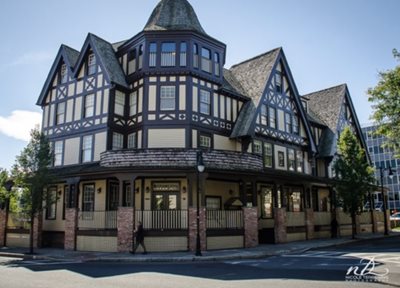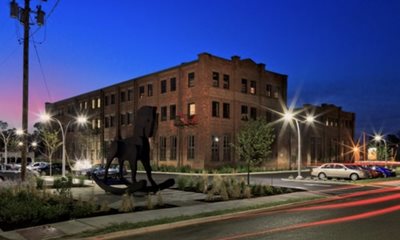Even before unprecedented federal funding became available for environmental technology, NeighborWorks network organizations had taken climate impact into account as they worked to find ways to heat and cool homes.
"It's important as a nonprofit community development organization to be both aspirational and a leader," says Kevin O'Connor, chief executive officer of RUPCO, which joined the U.S. Green Building Council in 2005.
NeighborWorks America is working to build the capacity of NeighborWorks network organizations through training, technical assistance and flexible funding to navigate the complexities of the multitude of funding sources and position organizations to access opportunities created through the Inflation Reduction Act (IRA) and beyond. Last year, the organization held a symposium, "Climate Resilience: Fostering Wealth, Health and Sustainability in Communities of Color."
NeighborWorks also developed new courses with climate at the center, which will be available at the upcoming Virtual Training Institute and NeighborWorks Training Institute.
"It's imperative that these resources reach those communities that are most impacted and create opportunities for people to live in safe, healthy and resilient homes and communities," says Lee Anne Adams, senior vice president, National Initiatives. "If we lean only on existing infrastructure and capacity to deploy resources, we risk leaving many communities even further behind. In some places, this may mean deep investment with flexible funding pairing public and private resources."
RUPCO was one of the first in the NeighborWorks network to use geothermal as an energy source, transferring heat to and from the ground for heat pumps. Data shows that this type of heat pump can cut energy bills by up to 65%.
As RUPCO became more aware of climate stress, "we thought it was important to move to electrification and move away from fossil fuels," O'Connor explains. "We thought we'd save money in operational costs."
Geothermal technology made sense mathematically, especially when the organization also incorporated solar. "We learned that it is cheaper and more efficient to convert 60-degree water to 72-degree temperature in the winter and to cool it down in 100-degree heat," O'Connor says. "It made economic sense. It made environmental sense."
 So when leaders acquired more space adjacent to RUPCO's headquarters, they built wells on the property, and installed a geothermal, closed-loop system. "We saw operational savings and environmental goals being met. It just made sense to us and we took the step."
So when leaders acquired more space adjacent to RUPCO's headquarters, they built wells on the property, and installed a geothermal, closed-loop system. "We saw operational savings and environmental goals being met. It just made sense to us and we took the step."
After working on its own building, which includes other commercial spaces and eight living spaces, the organization decided to use geothermal for new construction, Woodstock Commons, which opened in 2013, with 53 units for artists, seniors and working families. Next came The Lace Mill, a refurbished factory in the city of Kingston, which also incorporated solar arrays. The site mechanically tempers water instead of wells. All the while, the organization investigated other technologies.
Energy Square was the nonprofit's first LEED Platinum project using a near passive-house design and the first project in upstate New York to achieve net zero for living. That occurs when developers negate greenhouse gases produced by finding other ways to reduce emissions and absorb carbon dioxide. Here, residents pay rent but all utilities are included, keeping residents' costs in mind. 
"The only hiccup in digging wells there was hitting groundwater," O'Connor says. But in the end, they got to where they wanted to be. Now, the organization is working on three more projects, all of which include geothermal. Our proposed Cold Spring Park in Tannersville, New York, will be the company's first certified passive house. "We're a user," O'Connor says. "We like it."
There have been savings costs – and O'Connor hopes for more, once the organization is able to add batteries to its solar systems. But it's been difficult to quantify the amount of savings without a baseline. Still, at Energy Square, there's no separate utility bill for renters. Of RUPCO's 770 rental apartments, 120 use geothermal energy. All of the next 180 units that will be constructed will also use geothermal.
In the NeighborWorks network, 120 organizations employed some type of climate resilience standard on a total of 1,131 projects in fiscal year 2023. These included both real estate development and rental projects ranging from small repairs to new construction. Other climate-resilience related programs included solar lighting installations, community gardens and hazardous waste cleanups.
Next week, see how geothermal energy worked for another NeighborWorks network organization, as more organizations consider different energy sources.
04/23/2024

